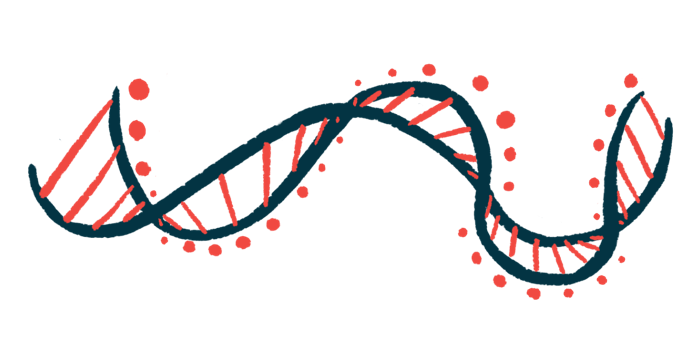TFG Mutation May Cause Rare Type of CMT2 by Damaging Axons
Study of family with mutation traces its effects in cell, animal models

A rare form of late-onset Charcot-Marie-Tooth disease type 2 (CMT2), caused by TFG gene mutations, is marked by the degeneration of nerve cell projections that include axons, a study suggested.
The study also characterized the impact of a specific TFG mutation in a family, which indicated progressive lower-limb muscle weakness with age.
In addition, its researchers noted that the activation of a neuroprotective pathway in response to TFG protein deficiency, seen in zebrafish, may lead to ways of treating CMT2 due to TFG mutations.
The study, “TFG mutation induces haploinsufficiency and drives axonal Charcot–Marie–Tooth disease by causing neurite degeneration,” was published in the journal CNS Neuroscience & Therapeutics.
CMT2 is marked by genetic mutations that disrupt the function of axons — the long projections extending from nerve cell bodies that conduct signals to neighboring nerve or muscle cells. Subtypes of CMT2 are classified based on specific genes that are mutated.
Recently, mutations in the TFG gene have been associated with a rare, late-onset form of CMT2, characterized by slowly progressive weakness and atrophy (shrinkage) of the muscles of the lower legs and forearm (distal muscles). However, how defects in the TFG gene lead to CMT2 is currently unknown.
TFG gene mutation studied through its protein, TFG
Researchers at the Air Force Medical University, in China, examined three related individuals who carried a TFG mutation and analyzed the impact of this mutation in mouse nerve cells (neurons) and a zebrafish model.
A 35-year-old woman had a 10-year history of weakness in her right lower limb. Her left lower limb was affected three years after the right leg, and symptoms gradually worsened with age. Over the previous year, weakness began in her right hand. Tests showed poorer motor and sensory nerve conduction velocities and muscle atrophy in her pelvis, thigh, and calf.
In comparison, her 12-year-old daughter showed no symptoms, neurological abnormalities, or signs of muscle atrophy. Her 58-year-old uncle, however, had with similar symptoms but with onset in his 30s, and was in a wheelchair due to progressive lower limb weakness at the time of study’s conclusion. He was diagnosed with peripheral neuropathy, or damage to nerves outside the brain and spinal cord.
“The varying degrees of muscle weakness and muscle atrophy in the three individuals clearly indicated that the disease progresses with age,” the researchers wrote.
Genetic analysis found one TFG mutation in all three family members called c.806G > T, whereby guanine (G) is changed to a thymine (T), both DNA building blocks. The woman’s husband did not carry this mutation.
As encoded by the TFG gene, the levels of functional TFG protein were slightly lower in the unaffected daughter and further lowered in her affected mother.
In a human cell line, this TFG mutation caused the TFG protein to form clumps, or aggregates, with itself and with non-mutated TFG protein, reducing overall TFG levels. Overproduction of the defective TFG protein confirmed the formation of aggregates.
Based on these findings, the team suggested that the TFG mutation led to haploinsufficiency, in which a single functioning copy of a gene is inadequate to maintain normal TFG protein function.
Next, researchers lowered the levels of naturally occurring TFG protein in mouse neurons. After eight days, there were no apparent changes in neurons, “suggesting that TFG [protein] deficiency did not affect neuronal maturation,” the researchers noted.
After 17 days of lower TFG levels, however, degeneration of neuronal projections, called neurites, such as axons and dendrites, was observed alongside high levels of neuron cell death (apoptosis).
Similar experiments were conducted on zebrafish. Here, lower TFG protein levels led to general malformations with a curved body, motor neurons lacking a uniform arrangement, significantly shorter motor axons, and high levels of neuronal death in both the brain and spinal cord. Over 80% of zebrafish with reduced TFG died within three days, and those that survived showed a high rate of bodily deformity.
Mutant fish larvae had decreased motor abilities, traveling a short total distance at a slower speed and with poorer mobility than normal larvae, suggesting that “sufficient [gene] expression contributes to motor neuron development and is required for normal locomotor function in zebrafish,” the scientists wrote.
Lastly, reduced TFG levels activated the Wnt signaling pathway, an essential pathway for axonal extension and neuroprotection, in proportion to impaired axonal growth. These results suggested that the activation of this pathway “may act as a protective factor that facilitates neurite outgrowth under conditions of TFG deficiency,” the team added, and may “offer opportunities for novel therapies for TFG-related CMT2.”
“We found a potential TFG haploinsufficiency mechanism for a CMT2-associated TFG mutation,” the researchers concluded. “Progressive neurite degeneration and a CMT2-liked motor disturbance were found in these TFG-deficient models, which highlights the critical role of TFG [protein] dosage in the maintenance of the neuronal system.”







